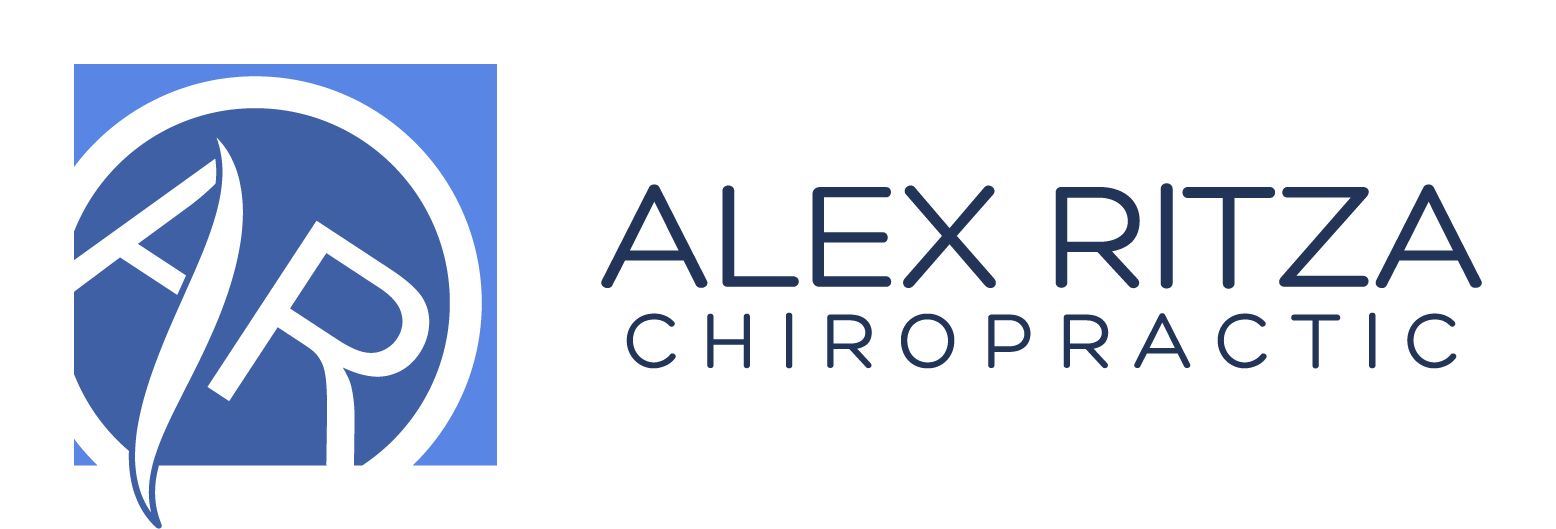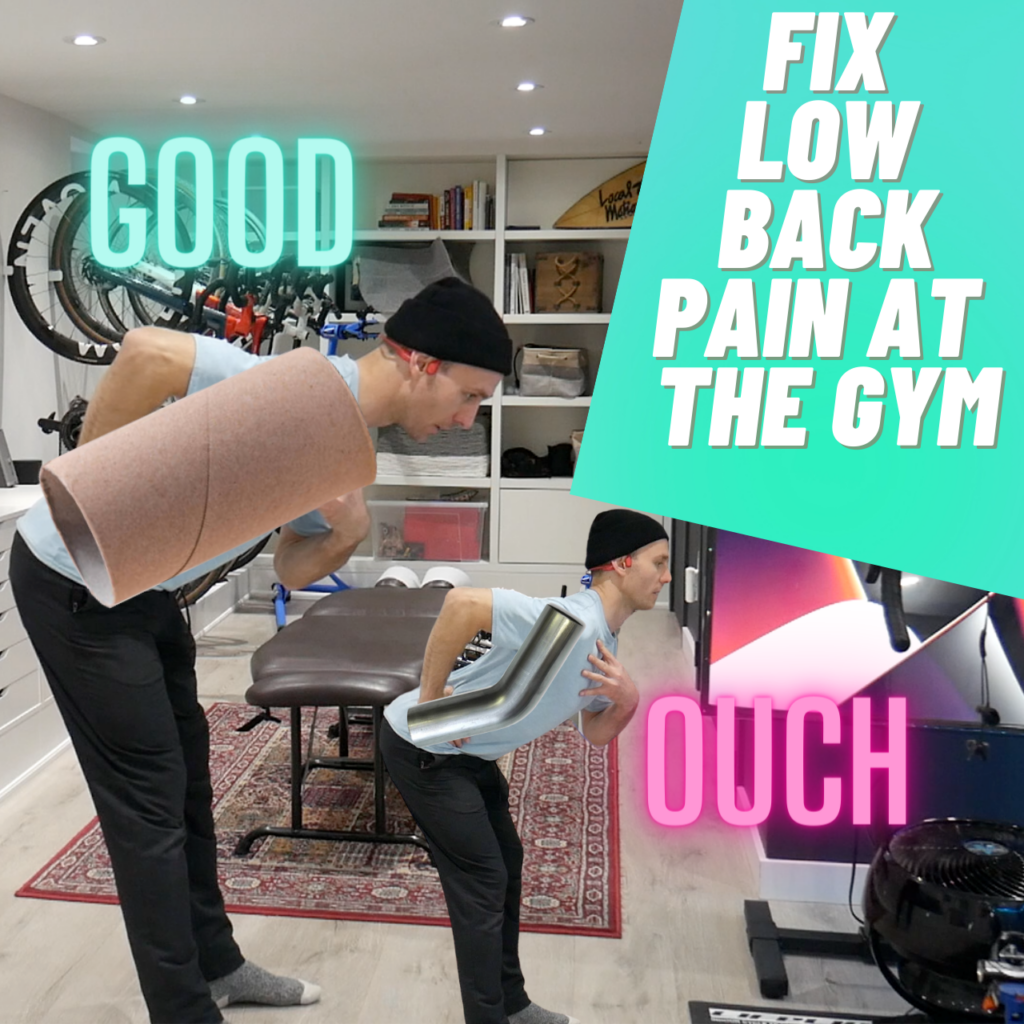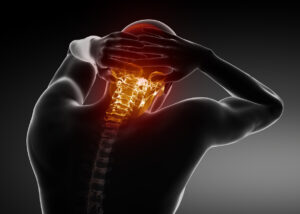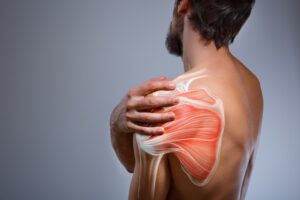Low Back Stiffness After Working Out – A Symptom of a Problem or Poor Technique
If you suffer from low back stiffness after working out or low back pain after exercise then read on.. Pain across the small of your back or the feeling like your muscles won’t relax after working out your back is very common. This is a prevalent complaint from new and existing patients that is typically very easy to address with care or technique.
As a Corrective Chiropractor, my goal is to always address the root cause of the problem: for existing patients with a relatively healthy spine, it is often a technique problem. For new patients that do not regularly take care of their spine, it can be a technique issue but often reflects an underlying problem with the spine. Finding the root cause of low back stiffness after working out is the key.
Low Back Pain After Exercise – The Root Cause
An examination is always required to assess the underlying health of the spine and one’s technique so if this is you, get your spine checked! Remember, symptoms are like a dashboard light on your car and the presence of a symptom lighting up on the dashboard does not tell you what, where or why there is a problem, just that there might be one.
But, if we make a BIG assumption that your spine is perfectly healthy then the most common cause of this complaint is an overactivation of the lumbar (low back) paraspinal muscles when the lifting. Instead of the back muscles, heavy lifting should be done by the bigger and stronger gluteal muscles. Almost all “sports” injuries without trauma are an issue of repetitive strain and in most cases of a poorly executed deadlift, squat or back exercise causing soreness, the low back muscles are being repetitively strained just like a pinky finger muscle would be if you asked it to do a dumbbell curl instead of the bigger and stronger biceps.
When extending the spine backwards like with standing from a deadlift or squat, the glutes are stronger and more optimally “designed” to be doing the lion’s share of the movement. When the low back muscles are repetitively contracted against a higher load than they are used to/capable of lifting conformably, symptoms of repetitive strain are sure to follow to let you know something is wrong with your body or your technique (or both!). Low back stiffness after exercise usually means the glutes are not doing enough work and the low back muscles are doing too much
The Technique Fault That Causes Low Back Stiffness With Lifting
 Picture your body from the side. Draw a straight line down from the ear and it should intersect your shoulder and hip if your spine is stacked up with excellent structure and posture. Now picture your body from the side and focus just on the line between the shoulder and the hip and imagine a new dot that intersects this line at the middle of the abdomen around the rib cage. When this line is broken and the middle dot at the base of the rib cage moves forward of the other two dots, this is going to place more strain on the low back muscles and place the gluteal muscles at a disadvantage for lifting.
Picture your body from the side. Draw a straight line down from the ear and it should intersect your shoulder and hip if your spine is stacked up with excellent structure and posture. Now picture your body from the side and focus just on the line between the shoulder and the hip and imagine a new dot that intersects this line at the middle of the abdomen around the rib cage. When this line is broken and the middle dot at the base of the rib cage moves forward of the other two dots, this is going to place more strain on the low back muscles and place the gluteal muscles at a disadvantage for lifting.
In technical parlance, this is a loss of the “neutral spine” and the adoption of a lordotic spine and anteriorly tilted pelvis.
If you were to review the hip hinge exercise as part of the Skills section in our MOVE Curriculum, you would feel the lower and mid back come forward off of the dowel when checking if your spine is neutral.


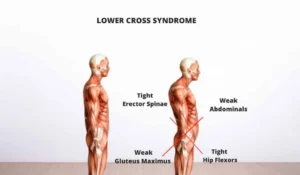
You might have also heard of this position as “lower cross syndrome” which refers to a more chronic state of “tension” in the lower back and hip flexor muscles and the relative weakness of the lower abdominals and gluteals muscles that will help to tilt the pelvis backwards and reduce the lordosis of the lumbar spine. If someone has lower cross syndrome it makes it even more difficult to maintain a stacked-up, neutral spine for lower body exercise and to minimize strain on the already strained lumbar spine paraspinal muscles. Low back stiffness after working out could be more common if your have postural/structural changes.
How To Stop Low Back Stiffness After Working Out
- Tighten the lower abdominals like you are about to get punched by the GOAT
- Give the glutes a brief squeeze to deactivate the lumbar paraspinal muscles
- Deadlift, squat, do “exercise” by ensuring you are always focusing keep the spine as neutral/stacked up as possible. The line between the shoulder, rib cage and hips shoulder remain straight. In the video below, you will see me demonstrate a hip hinge and describe how I picture the straight-lined mid-section as a cylinder that we do not want to bend
- Hinge at the hips when bending forward by sticking the butt out and keeping the spine neutral by engaging the lower abdominals. This shifts as much weight as possible to the glutes/hips
If you have been doing all this and your back is still hurting you, it might be time to see a Corrective Chiropractor to help get to the root of the issue
